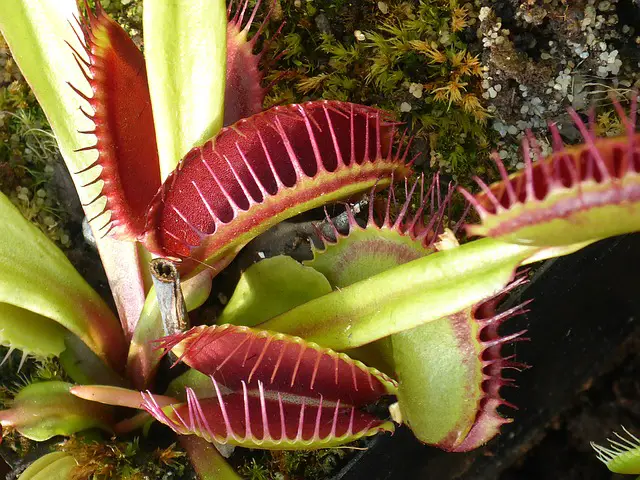Venus flytraps are fantastic plants to own. Many people buy them to control the bug population at home. But, are Venus flytraps good bug controllers?
Venus flytraps can capture bugs and reduce the bug population at home, but they are limited to consuming 5-10 bugs a month. The plant’s size restricts them from capturing large bugs. Other carnivorous plants, such as Pitcher plants, are more effective bug controllers.
Depending on your situation, employing Venus flytraps as a bug control can be a good idea. This article will teach you how effective Venus flytraps are as pest control and some alternate solutions.
Venus Flytraps for Pest Control
Having pests in your home or your garden can be a big problem. A few insects crawling around is not a big deal, but it can be bothersome and a health risk once the number increases.
Venus flytraps sometimes come to mind when thinking about pest control options.
Venus flytraps evolved to develop bug trapping mechanisms. Their leaves are modified to look like jaws. The plant uses its traps to capture and consume bugs. But, how effective are Venus flytraps for bug control?
Venus Flytrap Effectiveness
Venus flytraps have some limitations when measuring their effectiveness as pest control.
Venus flytraps are effective predators. They capture enough bugs to supplement their diet. But, as pest control, a single Venus flytrap is limited to capturing less than a dozen small bugs per month. Also, Venus flytraps only attract insects searching for nectar.
The number of bugs Venus flytraps can capture is limited by their size, trapping mechanism, digestion process, and dormancy.
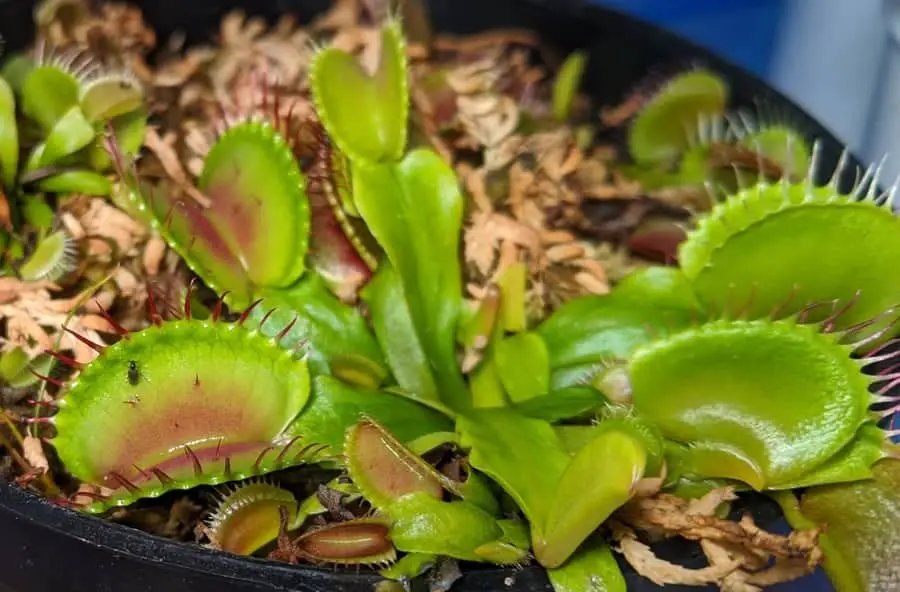
Size: Venus flytraps are small plants. Mature Venus flytraps grow about 5 inches in diameter and develop trap sizes that reach an average of 1- inch in length. Venus flytraps can consume various arthropods, but their catching effectiveness lowers substantially with large bugs.
Venus flytraps consume bugs that can fit within a trap. With 1-inch traps, they can capture most flies, gnats, and ants, but larger bugs such as roaches or crickets are usually too large for the plant.
Also, Venus flytraps only grow up to 5-7 traps at a time. So, in the unlikely scenario, all the traps are full, the plant would have only captured a handful of bugs.
Trapping mechanism: Venus flytraps employ a snap trap mechanism to capture prey. They produce tweet nectar inside their traps to attract potential victims.
Technically Venus flytraps can consume almost any insects and arachnids. But, because they use sweet nectar to attract prey, only nectar-eating bugs are common victims. The sweet nectar attracts these insects:
- Ants
- Flies
- Bees
- Moths
- Mosquitoes
- Beetles
- Wasps
Venus flytraps are much more effective at capturing nectar-loving insects more than anything else. Yes, sometimes Venus flytraps capture other insects, but it is less likely.
Digestion process: Venus flytraps can capture bugs in just a few seconds, but the digestion process takes several days. Small bugs are consumed in 7-10 days, and large bugs can take up to 3 weeks.
During digestion, closed leaves are inactive to capture bugs. Each leaf will only be ready to capture prey once the digestion process is complete and the leaf is fully open again.
Dormancy: Venus flytraps experience a dormancy period during the winter. If a Venus flytrap lives outdoors and goes dormant during the winter, it stops capturing bugs.
Dormancy is similar to hibernation. A Venus flytrap rests and stops performing non-essential functions. Unfortunately, dormant Venus flytraps stop capturing bugs for 2-3 months.
Even though Venus flytraps have limitations as a pest control option, they can still provide some benefit. The next section will help you implement Venus flytraps as bug controllers.
How to Use Venus Flytraps as Bug Controllers
Venus flytraps can be used as bug controllers in homes, gardens, or greenhouses.
Venus flytraps are effective at capturing the occasional bug at home. But, they won’t eliminate a whole plague. If you notice a consistent number of pests at home, consider contacting professional help.
I place some of my Venus flytraps on a windowsill at my apartment. I do concurrently have any pest control needs, but my plants help capture the occasional fly and benefit from consuming it!
Outdoors, Venus flytraps are effective predators. But, controlling plagues within a garden is a challenging task for only a handful of Venus flytraps. Due to bugs’ availability outdoors, I would recommend employing other types of carnivorous plants (more information in the last section) or getting professional help.
It is possible to control the bug population inside greenhouses with Venus flytraps, but you will need multiple plants to observe the positive effects. Pitcher plants or sticky leaf carnivorous plants are commonly employed in greenhouses as bug controller due to their high effectiveness as bug controllers.
Care Consideration for Venus Flytraps
If you decide to buy Venus flytraps and use them to control bugs, you must learn about caring for your plants.
Venus flytraps are unique; they have precise growing requirements. The list below summarizes the most important considerations:
- Light: Venus flytraps need plenty of light. Place them under partial or direct sunlight for at least six hours a day. Optimally, they should receive 12 hours of light.
- Watering: Only water Venus flytraps with rainwater, distilled water, or reverse osmosis water. Water frequently to keep the soil moist but do not flood it.
- Soil: Only employ nutrient-free soil. Pure sphagnum moss or peat moss are viable options. Mixing moss with sand or perlite can help promote drainage and aeration.
- Trimming: Remove black leaves by cutting them off after they dry up completely.
- Temperature: Keep Venus flytraps between 32 F (0 C) and 95 F (35 C).
- Humidity: Venus flytraps can adapt to arid climates, but they benefit from high humidity environments.
- Dormancy: Venus flytraps require a yearly dormancy period during winter.
- Feeding: Venus flytraps benefit from capturing bugs.
- Repotting: Repot once a year.
- Fertilizers: Do not fertilize.
Follow the care considerations in this list and avoid killing your Venus flytrap. Also, for more in-depth care instructions, read the Ultimate Venus Flytrap Care Guide. It is a fantastic resource for beginners!
Other Carnivorous Plants for Pest Control
Some people employ carnivorous plants as bug controllers. Carnivorous plants can be a solution for specific pest control scenarios, but different carnivorous plant species provide different benefits.
The three most effective carnivorous plants for pest control are Pitcher plants, Sundews, and Butterworts. Here is an overview of each:
Pitcher Plants: These plants characterize by pitcher like structures that attract bugs. Bugs are lured by sweet scent. Then, if the victim slips inside the trap, slippery surfaces prevent the bug from scaping.
Pitcher plants can capture dozens of bugs at a time in each pitcher. Also, each pitcher plant has multiple pitchers ready to capture and consume bugs.
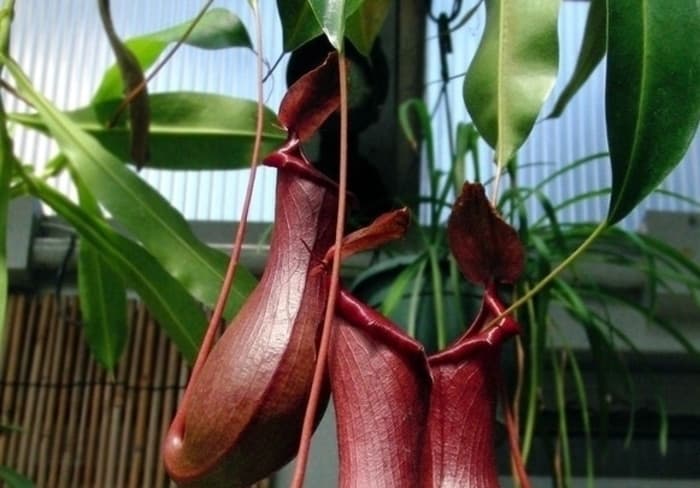
Butterworts: Butterworts or Mexican butterworts have beautiful flowers and sticky leaves. The leaves characterize by having a strong adhesive substance. As insects walk through the leaves or land in one, they get stuck. When bugs attempt to fight their way out of the adhesive surface, they end up getting stuck more and more.
Butterworts take their time digesting their victims. The plant secretes enzymes to digest the bug and slowly decomposes it.
All the leaves within the plant are capable of capturing and digesting prey. The only factor that limits how many bugs get stuck to the plant is the leaves’ size.
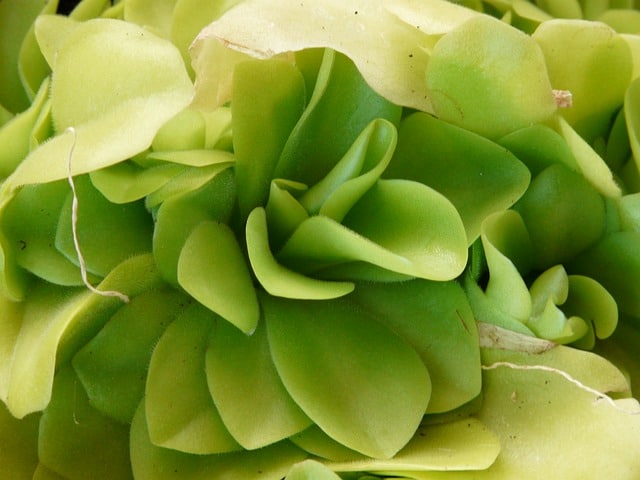
Sundews: Sundews, also known as Drosera, are effective bug controllers. They come in many different shapes and sizes, but their big trapping mechanisms act similarly. These plants employ their adhesive leaves to capture bugs.
Bugs that get stuck to the tentacles of the plant end up becoming food. Mature Sundews can capture more prey and larger bugs due to their size.
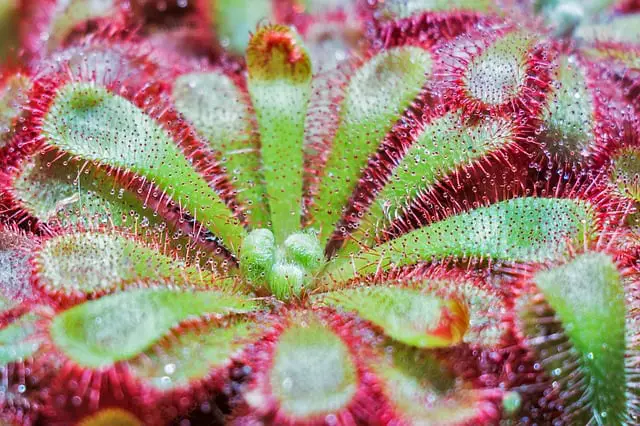
Before selecting a specific species, research their care requirements. Some carnivorous plants prefer tropical climates; others need different seasons, such as warm summers and cold winters. Choosing a plant that grows well in your location will help you keep them healthy and ready to capture bugs.
You can learn about different carnivorous plants, including Sundews, Butterworts, and Pitcher Plants in this article: 10 Fascinating Types of Carnivorous Plants. It includes descriptions, care considerations, and tips.


